#chinesecalligraphy
Text


叄葉公館
#branding#graphic design#chinesecalligraphy#hongkong#calligraphy#chinese culture#typography#typo#logotype#logoconcept
29 notes
·
View notes
Text
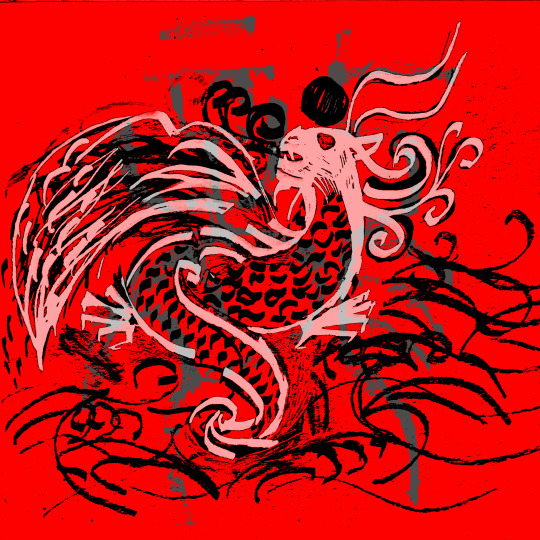
#m210297#poster#graphic design#posterart#anna kuzminskaya#chinese design#m210297_posters#calligraphy#dragon#dragon illustration#chinesecalligraphy#chinese#dragon tattoo
7 notes
·
View notes
Text
Learning chinese art for 1,5 month. After watching Faraway wanderers I've wanted the fan like Wen Kexing had. But also I'm obsessed with wangxian too. So I've done my best to save symbolism in this art on the fan🥺🥰
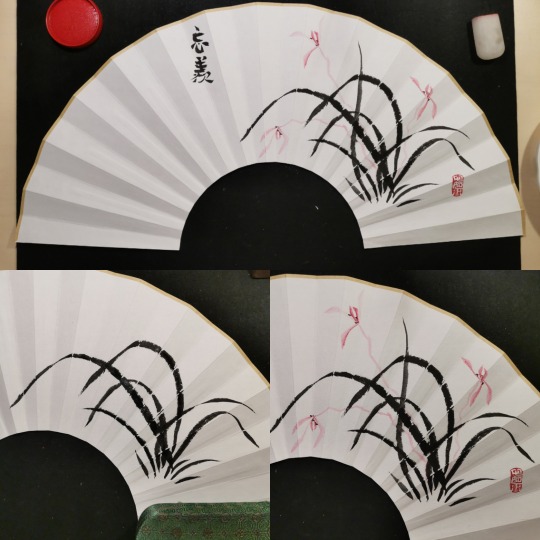


#mo dao su zhi#wei wuixan#lan wangji#wangxian#faraway wanderers#wen kexing#wenzhou#art#artists on tumblr#chinese#mdzs lan zhan#mdzs wei ying#mxtx mdzs#chinesecalligraphy#orchids
8 notes
·
View notes
Photo

A Set Chinese Qing Dy Lapis Lazuli Writing Instrument w Zitan Wood Box https://www.etsy.com/listing/1384210383/a7752-a-set-chinese-qing-dy-lapis-lazuli?click_key=128fd2a42aa987384b9d3f8fa7f23a3ebb90ed83%3A1384210383&click_sum=72862bdb&ga_search_query=wood&ref=shop_items_search_5&frs=1
#lapislazuli#chineseantique#chinesestone#homedecor#artcollection#handmade#handcraft#chinesecalligraphy
15 notes
·
View notes
Text
Customize homemade designed handwritten Chinese calligraphy art house decoration 静心 & 竹


Medium:
ink on paper
Size:
20*20cm
Description:
*静心(jingxin)find your peaceful, calm your mind
📧 DM customize your order #ink #inkdrawing #chinesepainting #chinesecalligraphy#chinese #chineseculture #customized #art #leeds #artist #artgallery #artwork #artlovers
#calligraphy#chinese painting#artwork#inkart#watercolor#artgallery#chineseart#chinesecalligraphy#customized#character art#artistic
3 notes
·
View notes
Photo

I've never posted some of my practice in chinese calligraphy classe, but here's the same poem in 3 differents calligraphy style 1. Regular 2. Semi-cursive 3. Cursive 19.08.2022 #calligraphy #art #chinesecalligraphy #artclass #artstudy #artstudent #artcontemporary #artschool #calligraphyart #artistoninstagram #artist #ink #calligraphypractice #lettering #chinesecalligraphyart https://www.instagram.com/p/Cj8Unp1rS8C/?igshid=NGJjMDIxMWI=
#calligraphy#art#chinesecalligraphy#artclass#artstudy#artstudent#artcontemporary#artschool#calligraphyart#artistoninstagram#artist#ink#calligraphypractice#lettering#chinesecalligraphyart
3 notes
·
View notes
Text

Chinese Calligraphy ' Wong ' with Ink Brush Flowers
.
.
.
#chinesecalligraphy #chinesecalligraphytattoo
#calligraphytattoo #flowertattoo #flowerstattoo
#calligraphyhk #calligram #brushtattoo #inkbrush
#tattoodaily #tattooart #tattooartwork #asianinkandart
#instattoo #instatattoo #hktattoostudio #tattoohk
#hktattoo #hongkongtattoo #花 #書法 #書道 #書道刺青
#書法刺青 #紋身 #香港紋身 #刺青 #꽃타투 #캘리그라피
#Chinese Calligraphy#Wong#ink Brush Flowers#chinesecalligraphy#chinesecalligraphytattoo#calligraphytattoo#flowertattoo#flowerstattoo#calligraphyhk#calligram#brushtattoo#inkbrush#tattoodaily#tattooart#tattooartwork#asianinkandart#instattoo#instatattoo#hktattoostudio#tattoohk#hktattoo#hongkongtattoo#花#書法#書道#書道刺青#書法刺青#紋身#香港紋身#刺青
2 notes
·
View notes
Photo

Blumen Zeichnung Flower painting chinese Ink painting japanese sumie painting chinesesische japanische Tuschemalerei Malkurse Calligraphy seminar painting seminars Tusche Malkurse Malseminar Zeichenkurse Teesign 77 Hauptstr.77, 12159 Berlin #malkurse #chineseinkpainting #chinesecalligraphy #japanesepainting #japanesecalligraphy #sumie #sumiepainting #plumpainting #paintingseminare #flowerpainting #calligraphyseminar #paintingclassberlin #homedecoration #homedesign #officedecoration #walldecoration #wallart #tintekunst #Wandkunst #Tuschezeichnung #pflaumenzeichnen #chinesischekalligraphie #malkursefuererwachsene #japanischekalligraphie #malkurseberlin #Blumenzeichnen #pflaumenzeichnung #zeichenkurse #Tuschemalerei #zeichenseminar https://www.instagram.com/p/ClRymjEoZN_/?igshid=NGJjMDIxMWI=
#malkurse#chineseinkpainting#chinesecalligraphy#japanesepainting#japanesecalligraphy#sumie#sumiepainting#plumpainting#paintingseminare#flowerpainting#calligraphyseminar#paintingclassberlin#homedecoration#homedesign#officedecoration#walldecoration#wallart#tintekunst#wandkunst#tuschezeichnung#pflaumenzeichnen#chinesischekalligraphie#malkursefuererwachsene#japanischekalligraphie#malkurseberlin#blumenzeichnen#pflaumenzeichnung#zeichenkurse#tuschemalerei#zeichenseminar
2 notes
·
View notes
Text
Traditional Chinese Calligraphy: Ancient Art Mastery

Traditional Chinese Calligraphy: Understanding the beauty
Welcome to the captivating world of Traditional Chinese Calligraphy, an art form that has been mastered for centuries. With its roots dating back to the Han dynasty, Chinese calligraphy is not just writing, but a combination of exquisite brush control, attention to composition, and rapid, spontaneous strokes. It is a reflection of ancient art mastery that continues to mesmerize art enthusiasts around the world.
Imagine the delicate strokes of a flexible brush made from animal hair, dancing across the paper. Picture the ink, meticulously created by rubbing dried materials on a wet stone, flowing effortlessly onto the page. Traditional Chinese calligraphy is a testament to the skill, precision, and artistry of its practitioners. It is a window into the rich cultural heritage of China, showcasing the profound impact of artistic expression.
Key Takeaways:
- Traditional Chinese calligraphy is an ancient art form that dates back to the Han dynasty.
- It combines exquisite brush control, attention to composition, and rapid, spontaneous strokes.
- The materials used in calligraphy include flexible brushes made from animal hair, ink created by rubbing dried materials on a wet stone, and high-quality paper invented by Cai Lun.
- Calligraphy had a significant influence on Chinese painting, with techniques and conventions being reflected in the art.
- There were five main scripts in ancient Chinese calligraphy: Seal script, Clerical script, Regular script, Cursive script, and Drafting script.
The Influence of Calligraphy on Chinese Painting
Chinese calligraphy has had a profound impact on the art of painting in China. The techniques and conventions of calligraphy are reflected in painting, creating a harmonious relationship between the two art forms. Both calligraphy and painting emphasize the importance of brushstrokes, spontaneity, and variation to bring life to the artwork. The illusion of depth is created through the skilled manipulation of brushstrokes, capturing the essence of the subject matter.
In addition to brushwork, composition plays a crucial role in both calligraphy and painting. The arrangement of elements and the skillful use of empty space contribute to the overall aesthetic value of the artwork. Calligraphy often appears on paintings, either as descriptive text or as a way to record important information about the painting. The integration of calligraphy and painting enhances the visual experience and adds a deeper layer of meaning to the artwork.
Examples of famous calligraphy and paintings by renowned artists are considered precious treasures in the Chinese art world. These masterpieces showcase the skill and creativity of artists who have mastered both calligraphy and painting. The influence of calligraphy on Chinese painting is undeniable, as it has shaped the techniques, styles, and artistic expressions of countless artists throughout history.
Calligraphy
Painting
Focuses on expressive writing
Focuses on visual representation
Emphasizes brushstrokes and composition
Emphasizes brushstrokes and composition
Uses calligraphic text to describe or explain the artwork
Uses calligraphic text to enhance the meaning of the painting
Creates fluid and dynamic characters
Creates depth and atmosphere through brushwork
Chinese calligraphy and painting are intertwined art forms that continue to inspire and captivate audiences worldwide. The influence of calligraphy on painting can be seen in the techniques, composition, and use of text in Chinese artworks. By understanding the connection between these two art forms, one can gain a deeper appreciation for the rich cultural heritage of China and the artistic beauty it has produced throughout history.
The Different Scripts in Chinese Calligraphy
Chinese calligraphy encompasses a variety of scripts, each with its own unique characteristics and artistic value. Understanding the different scripts is essential for appreciating the depth and richness of this ancient art form. Let's explore the five main scripts in Chinese calligraphy:
1. Seal Script
The Seal script, also known as Zhuan script, is one of the oldest forms of calligraphy and was primarily used for official seals and inscriptions on bronze vessels during the Qin and Han dynasties. It is characterized by its square and angular shapes, with each stroke connected to form a solid block-like structure.
2. Clerical Script
The Clerical script, or Li script, emerged during the Han dynasty and became the standard script for record-keeping. It features more rounded and flowing strokes compared to the Seal script, with greater emphasis on artistic expression. This script is often used for writing poems and inscriptions on stone tablets.
3. Regular Script
The Regular script, also known as Kai script, is the most widely used and recognized script in Chinese calligraphy. It evolved from the Clerical script and is characterized by its balanced and uniform strokes. The Regular script is highly legible and is the standard script for printing and everyday writing.
4. Cursive Script
The Cursive script, or Cao script, is a highly expressive and fluid style of calligraphy. It is characterized by its rapid, flowing, and interconnected strokes, making it challenging to read for those unfamiliar with this script. The Cursive script allows for greater artistic freedom and is often used for personal expressions and creative compositions.
5. Drafting Script
The Drafting script, also known as Xing script, is a semi-cursive style that strikes a balance between the Regular and Cursive scripts. It is known for its energetic and spontaneous strokes, showcasing the calligrapher's individual style and creativity. The Drafting script pushes the boundaries of convention and embraces innovation.
Each script in Chinese calligraphy offers a unique glimpse into the artistic skills and personality of the calligrapher. Whether it's the formal and structured Seal script or the free-flowing strokes of the Cursive script, exploring the different scripts is a fascinating journey through the history and artistry of Chinese calligraphy.
Script
Characteristics
Seal Script
Square and angular shapes, solid block-like structure
Clerical Script
More rounded and flowing strokes, emphasis on artistic expression
Regular Script
Uniform and balanced strokes, highly legible
Cursive Script
Rapid, flowing, and interconnected strokes, high artistic freedom
Drafting Script
Semi-cursive style, energetic and spontaneous strokes
The Mastery of the Four Arts of the Scholar
The four arts, also known as the four arts of the Chinese scholar, were the mastery of the qin (guqin), qi (game of Go), shu (Chinese calligraphy), and hua (Chinese painting). These arts were essential skills for aristocratic ancient Chinese scholars. The qin represented musical proficiency, while the game of Go showcased strategic thinking. Calligraphy demonstrated the scholar's poetic nature, and painting exemplified their creativity and ability to visualize. These arts were seen as markers of a scholar's learning and cultural refinement.
The qin, also known as guqin, is a traditional Chinese musical instrument often associated with scholarly pursuits. It is a stringed instrument that requires precise finger placement and control to produce beautiful melodies. Playing the qin required not only technical skill but also a deep understanding of the music and the ability to express emotions through the instrument.
The game of Go, also known as weiqi, is a strategic board game that originated in ancient China. It is played on a grid board with black and white stones, and the objective is to surround and capture the opponent's stones. Go requires deep concentration, critical thinking, and strategic planning, making it a favorite pastime of scholars and intellectuals.
Calligraphy and painting were considered the highest forms of art in ancient China, and mastery of these arts was a reflection of a scholar's cultural refinement and creativity.
Calligraphy, or shu, involved the skillful use of a brush to write Chinese characters. Each stroke had to be carefully crafted to create harmonious and visually pleasing compositions. Calligraphy was not just a form of writing but a means of artistic expression, allowing scholars to convey their thoughts and emotions through the flow of the brush.
Hua, or painting, encompassed various styles and techniques, including landscape painting, figure painting, and bird-and-flower painting. Scholars would often combine calligraphy and painting in their artworks, creating a harmonious blend of visual and written expression. Painting required a deep understanding of composition, color, and brushwork, and it allowed scholars to showcase their creativity and aesthetic sensibilities.
The Four Arts of the Scholar:
- Qin (Guqin) - Musical proficiency
- Qi (Game of Go) - Strategic thinking
- Shu (Chinese calligraphy) - Poetic nature
- Hua (Chinese painting) - Creativity and visualization
The mastery of the four arts was not only a mark of cultural refinement but also a way for scholars to cultivate themselves and pursue self-improvement. Through these arts, scholars could explore their creativity, express their emotions, and engage in contemplation and reflection. The four arts of the scholar continue to inspire and influence artists and intellectuals in China and around the world, reflecting the enduring significance of traditional Chinese culture.
The Significance of Chinese Calligraphy in Artistic Expression

Chinese calligraphy is not simply a form of writing, but a profound means of artistic expression. Through the delicate brushstrokes and thoughtful composition, calligraphy conveys the emotions, thoughts, and personality of the writer, becoming a reflection of their moral worth. The artistry of calligraphy lies in its ability to capture the spontaneous feelings of an individual and express them through the rhythm and flow of the brush.
Considered a form of high art, Chinese calligraphy holds a revered place in Chinese culture. It is believed that calligraphy allows the writer to delve into their innermost self and create expressive poetry, record their thoughts, or immortalize their teachings. In this way, calligraphy becomes not just a form of writing, but a vehicle for exploring one's own depths and leaving a lasting mark on the world.
Chinese calligraphy values precision, grace, and the mastery of individual style. The strokes of the brush are carefully planned and executed, each carrying its own weight and emotion. The composition of the characters on the page is meticulously arranged to create a harmonious and visually pleasing piece. It is through this attention to detail that calligraphy achieves its artistic beauty and captivates the eyes and hearts of those who behold it.
Influences Beyond Writing
“The art of calligraphy not only revolutionizes writing but also impacts other forms of artistic expression.”
Chinese calligraphy has had a significant influence on other artistic forms, such as painting and poetry. The techniques and conventions of calligraphy, including brushstrokes, spontaneity, and variation, are reflected in Chinese painting. Calligraphy often appears on paintings to describe and explain the artwork, adding depth and context to the visual piece.
Furthermore, calligraphy and poetry are closely intertwined in Chinese culture. The expressive nature of calligraphy makes it a natural medium for creating poetic verses. Calligraphers often write poems alongside their calligraphy, enhancing the aesthetic and emotional impact of both art forms. These poems become an integral part of the composition, offering additional layers of meaning and beauty.
The Beauty in Tradition
Chinese calligraphy is deeply rooted in tradition and carries a rich cultural heritage. The scripts and styles developed by famous calligraphers throughout history are studied and imitated by aspiring artists. By embracing this tradition, calligraphers not only learn the techniques and forms but also connect with the artistic lineage of their predecessors, carrying the spirit and essence of Chinese culture forward.
The continued practice and appreciation of Chinese calligraphy in modern times highlight its enduring significance. Calligraphy exhibitions, workshops, and courses allow enthusiasts to immerse themselves in the art form, preserving its legacy and ensuring its continued relevance in today's world. Moreover, the therapeutic and meditative qualities of calligraphy have been explored, making it a means of personal expression, self-discovery, and well-being.
The Mastery of Traditional Chinese Calligraphy Tools and Materials

Traditional Chinese calligraphy is a meticulous art form that requires the mastery of various tools and materials. The use of these tools not only enhances the calligrapher's skill but also adds a touch of authenticity to their work. Let's explore the essential tools and materials used in traditional Chinese calligraphy.
One of the most important tools in calligraphy is the brush. It is typically made from animal hair or feathers tied to a bamboo or wood handle. The shape and quality of the brush determine the precision and flexibility of the strokes, allowing the calligrapher to express their emotions and intentions on paper. The brushholder, another crucial tool, holds the brush securely and provides stability during the writing process.
Traditional Chinese Calligraphy Tools
Tools
Description
Brush
The main instrument used to create calligraphy characters. Made from animal hair or feathers tied to a bamboo or wood handle.
Inkstick
A solid block of ink made by grinding ink paste with water on an inkstone. It produces rich, black ink when rubbed against the stone.
Inkstone
A flat stone slab used for grinding the inkstick to produce ink. It allows the calligrapher to control the consistency and shade of the ink.
Paper
The writing surface for calligraphy. Traditional Chinese calligraphy paper is usually made from mulberry bark or rice straw, providing a smooth surface that enhances the flow of the brush.
The ink used in calligraphy is created by grinding an inkstick on an inkstone with water. This process produces a rich black ink that is smooth and water-resistant. The inkstone, usually made of stone or ceramic, provides a surface for grinding the ink and allows the calligrapher to control the consistency and shade of the ink.
Finally, the choice of paper is crucial in calligraphy. Traditional Chinese calligraphy paper is usually made from mulberry bark or rice straw, providing a smooth surface that enhances the flow of the brush. The absorbency of the paper also affects the appearance of the characters, allowing the ink to be absorbed or spread in a controlled manner.
Mastering the tools and materials of traditional Chinese calligraphy is an important step in becoming a skilled calligrapher. These tools not only facilitate the creation of beautiful characters but also enable the calligrapher to express their emotions and personality through their art.
Famous Chinese Calligraphers

Chinese calligraphy has produced many renowned artists throughout history. These famous calligraphers have left a lasting legacy and contributed to the development and evolution of this ancient art form. Their unique styles and contributions continue to inspire and influence calligraphers today.
Wang Xizhi
Wang Xizhi is widely regarded as the greatest calligrapher in Chinese history. He lived during the Eastern Jin dynasty and was known for his graceful and flowing script. Wang Xizhi's calligraphy was characterized by its elegance, balance, and rhythmic brushstrokes. His work, such as the "Lanting Xu" (Preface to the Poems Collected from the Orchid Pavilion), is considered a masterpiece of calligraphic art.
Yan Zhenqing
Yan Zhenqing was a Tang dynasty calligrapher known for his bold and powerful style. His calligraphy combined both strength and delicacy, displaying a sense of rhythm and vitality. Yan Zhenqing's most famous work is the "Yan Qinli Bei" (Tablet for the Yan Family Ancestral Hall), which showcases his distinctive brushwork and impressive mastery of the art form.
Huang Tingjian
Huang Tingjian was a Song dynasty calligrapher and poet renowned for his unique style and versatility. His calligraphy was characterized by its lyrical and expressive quality. Huang Tingjian's brushwork was fluid and spontaneous, capturing the essence of the Chinese literati tradition. His masterpiece, the "Mochizuki Hutian Tu" (Moonlit River in Autumn), is an exceptional example of his skill and creativity.
Calligrapher
Time Period
Distinctive Style
Notable Works
Wang Xizhi
Eastern Jin dynasty
Graceful and flowing script
"Lanting Xu"
Yan Zhenqing
Tang dynasty
Bold and powerful style
"Yan Qinli Bei"
Huang Tingjian
Song dynasty
Lyrical and expressive
"Mochizuki Hutian Tu"
These famous Chinese calligraphers have left an indelible mark on the art form, and their works continue to be admired and studied by calligraphy enthusiasts worldwide. Their contributions have helped shape the development and appreciation of Chinese calligraphy as a treasured cultural heritage.
The Evolution of Chinese Calligraphy and its Modern Significance
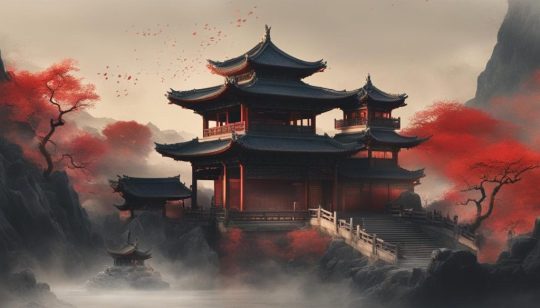
Chinese calligraphy has evolved over thousands of years, transforming from a functional means of communication into a highly respected and practiced art form. The ancient calligraphy scripts are still admired and imitated by calligraphers today, and the techniques and styles developed by past masters continue to be studied and appreciated.
Modern Chinese calligraphy holds great significance in the contemporary artistic landscape. It is not only a form of visual expression but also a means of connecting with the rich cultural heritage of China. As you explore the art of calligraphy, you immerse yourself in the traditions and philosophies that have shaped Chinese civilization.
Today, calligraphy remains a prominent aspect of Chinese culture, with numerous exhibitions, workshops, and courses available for enthusiasts.
Read the full article
0 notes
Text

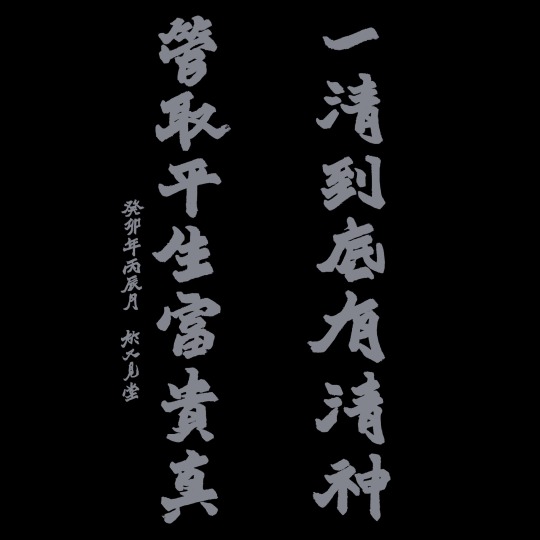
2 notes
·
View notes
Text


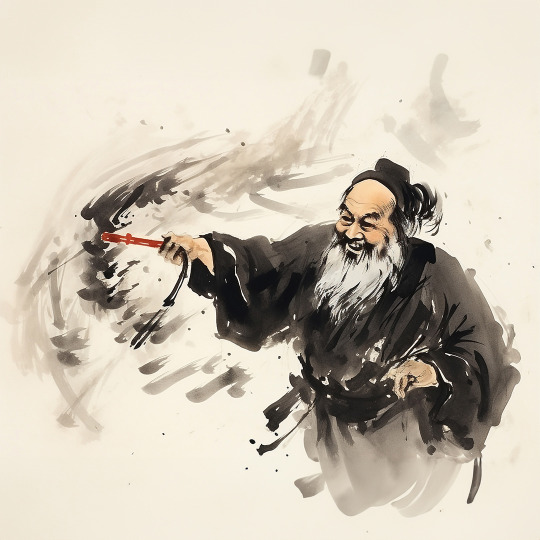


Chinese Ink Brush Art Style
Prompt: A Chinese Ink Brush, award-winning painting --no watermark --ar 4:3 --style raw
Click the link in bio now to learn more about art styles, and access free prompts and stock images!
#chineseinkbrushart#inkbrushpainting#chinesepainting#chineseinkbrushartstyle#chinesecalligraphy#chineseinkbrush#inkbrushart#chineseculture#aiartist#aiartcommunity#aiartwork#generativeart#digitalart#artoftheday#midjourneyartist#midjourneyinspire#midjourney#midjourneyart#midjourneyprompt#prompt#promptart#prompts#imaginebuddy#artstyle
0 notes
Text
Paint the art to my friend's birthday. 三生石上旧精魂(Three lifetimes are writ upon the Stone, old soul)
A lot of work and this is the result. Not excelent, I see mistakes but together looks good, i think😅

0 notes
Text
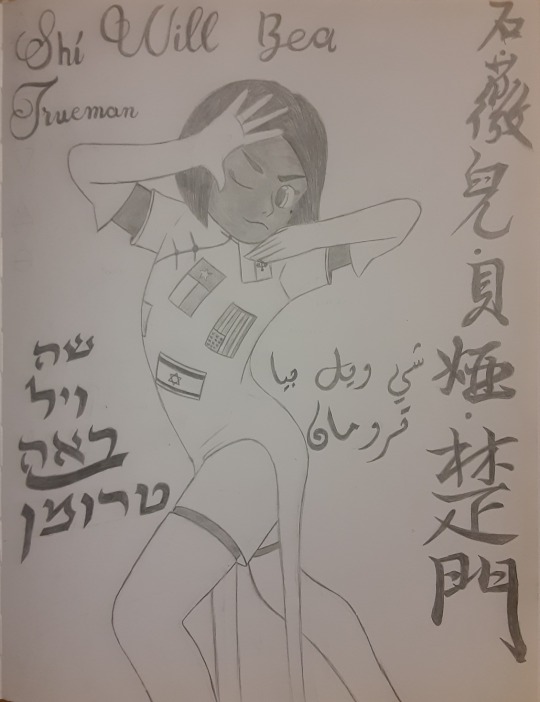
I loved Brick_ST_'s Hilda in Jojo pose so much that I had to try it out: twitter.com/Brick_ST_/status/1…
Incidentally, Will and Hilda are basically the same age and brick_ST_ tends to draw Hilda with similar proportions that I tend to draw Will with. Though, admittedly, brick_ST_ is a superior artist more consistent in keeping his characters on model. lmao
Read DIVINE WILL here.
#original character#original story#superhero#magical girl#dark fantasy#hopepunk#webnovel#kaiju#worldbuilding#arabic calligraphy#hebrew#chinesecalligraphy#calligraphy#qipao#jojoposting#critique welcome#critique wanted
1 note
·
View note
Text


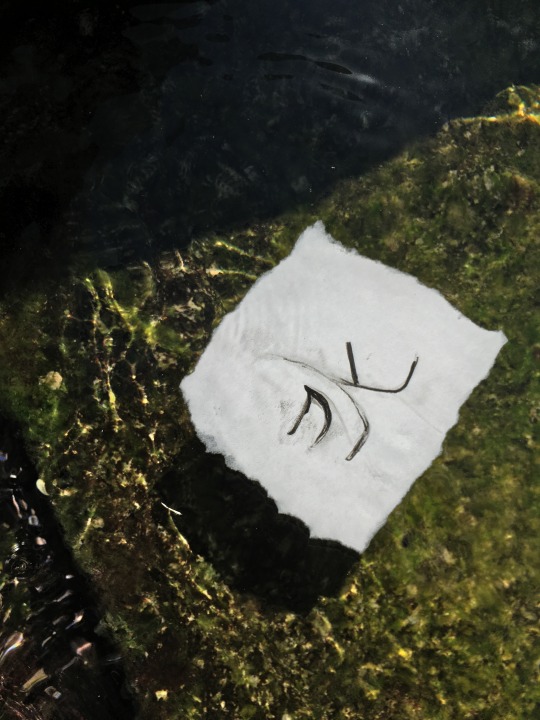

水
Calligraphy experiments.
Traditional Chinese.
Water / H2O
0 notes

